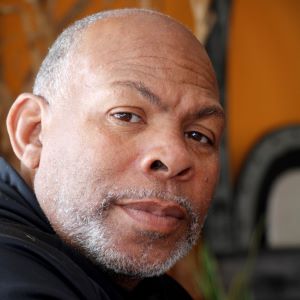
Every year the celebration of March Madness gets wilder and wilder. The financial stakes rise annually with each tip-off during the NCAA Basketball Tournament. The excitement grows as each bracket form is filled out. When spring rolls in every year the hoopla surrounding the 68-team field becomes a deafening roar of a high-stakes poker game.
The rambunctious cheers rev up the competitive spirits among players, coaches, fans and schools that are being represented in the tournament. If the schools and universities can build up this type of excitement about classroom performance of their student-athletes, particularly on the men’s side, collegiate athletics would then live up to its billing.
But they are not there yet. According to the annual released study by The Institute for Diversity and Ethics in Sport (TIDES) that monitors the academic progress among student-athletes and universities participating in the NCAA Tournament, college athletics among Division I schools still have a ways to go in achieving that mark.
The “Keeping Score When it Counts: Academic Progress/Graduation Success Rate Study of 2013 NCAA Division 1 Women’s and Men’s Basketball Tournament Teams, reflect two alarming distinctions.
The TIDES report, which comes from the DeVos Sport Business Management Graduate Program at the University Central Florida, reveals that female student-athletes pick up the slack better in the classroom than their male counterparts, graduating at a 90 percent clip compared to the 70 percent rate of men. The second alarming issue about the report is the lingering Graduating Success Rates (GSR) and the Academic Progress Rates (APR) gap between black and white athletes that continue to stand out.
White student athletes graduate at a 90 percent rate compared to the abysmal 65 percent of black basketball players claiming degrees, according to the TIDES survey. On the flip side of the coin, the racial gap is a lot smaller for female basketball players. While 94 percent of white female student-athletes graduate, black women show they’re just as equal hitting the books with an 88 percent graduation rate.
Women’s teams (60 teams) also have a higher number of graduation success (94 percent) over men’s teams (36 teams, which equates to 53 percent) that put degrees in the hands of at least 70 percent of its players. In a released statement that accompanies the report, Dr. Richard Lapchick, director of TIDES and Chair of the DeVos Sports Business Management Graduate Program, said female student-athletes typically perform better than their men counterparts academically.
“The women’s teams always give us good news to report each year. It has historically been clear that student–athletes on women’s basketball teams graduate at a higher rate than student–athletes on men’s basketball teams.”
The TIDES study, in some ways, also show graduation and academic progress results between white and black basketball student-athletes as both troublesome, but not unexpected. It is a disturbing trend that has become an unforgiving reality, especially for black males. When looking up and down the TIDES report, some of the best men’s basketball programs in the country have dismal graduation rates of their black student-athletes.
NCAA Tournament darling Butler, which has made two recent Final Four appearances, graduate only 33 percent of black basketball players, compared to the 80 percent of white student-athletes the school puts on the floor to compete. Shockingly, the University of California- Berkeley has the same number of black men’s basketball graduates as Butler.
Temple University (36 percent), Ohio State (38 percent), Arizona (38 percent) and Syracuse (43 percent) are not that much better. The schools with the worst graduation percentage among the schools in the report are Wisconsin and Iowa State at 14 percent, while Florida and South Dakota State (zero) basically flatlined with their black basketball student-athletes.
Several Historically Black Colleges and Universities are just as guilty in failing to graduate a greater percentage of their basketball student-athletes, according to the report. Southern University (27 percent) and North Carolina A&T University (33 percent) can improve on their student’s academic record.
But the news is not all doom and gloom. Duke, Villanova, Notre Dame, and Kansas are part of a group of 13 Division I schools surveyed that graduate all of its black male basketball players.

Dennis has covered and written about politics, crime, social justice, sports, and entertainment. Dennis currently covers the NFL, MLB, NBA, NCAA, and Olympic sports. Dennis is the editor of News4usonline.com and serves as the publisher of the Compton Bulletin newspaper. He earned a journalism degree from Howard University.

